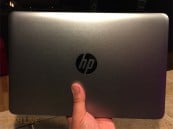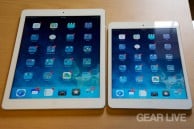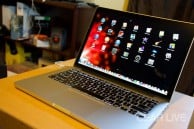Find Our Latest Video Reviews on YouTube!
If you want to stay on top of all of our video reviews of the latest tech, be sure to check out and subscribe to the Gear Live YouTube channel, hosted by Andru Edwards! It’s free!
Weekend Reading: Batman, Clint, Shooter, Granito And Rozum!

Posted by Tom Mason Categories: Editorials, Interviews, Movies, Reviews, DC Comics,
.jpeg) I have an idea for a great drinking game. Surf the internet and every time you come across a link to Bleeding Cool’s expose of Rob Granito, take a drink. You’ll be Lohan’ed before Monday. In the meantime, I await the Bluewater biography of Mr. Swipey McSwipe-swipe.
I have an idea for a great drinking game. Surf the internet and every time you come across a link to Bleeding Cool’s expose of Rob Granito, take a drink. You’ll be Lohan’ed before Monday. In the meantime, I await the Bluewater biography of Mr. Swipey McSwipe-swipe.
Let’s see what else is out there:
Batman: The writer Lance Mannion tries to teach his sons about Batman.
Liberty: Writer Martin Powell gets interviewed at Broken Frontier. Subject: his children’s books and The Halloween Legion and Liberty Unlimited, both of which I’m really looking forward to.
Blood: Mark Wheatley, Marc Hempel and Ricky Shanklin’s graphic novel Blood Of The Innocent is marching toward the big screen. Breck Eisner (The Crazies) is attached to direct and Bill Marsilii (Deja Vu) is writing the screenplay. According to Scoop: “The original comic book series set Dracula against Jack the Ripper and was published by Warp in 1985.”
Click to continue reading Weekend Reading: Batman, Clint, Shooter, Granito And Rozum!
British Comics: Helping Japan & New Zealand

Posted by Tom Mason Categories: Editorials, Independent,
 British cartoonist Lew Stringer (cartoonist for The Dandy) brings news of a new charity comic book "to help victims of the terrible recent, and ongoing, disasters in New Zealand and Japan."
British cartoonist Lew Stringer (cartoonist for The Dandy) brings news of a new charity comic book "to help victims of the terrible recent, and ongoing, disasters in New Zealand and Japan."
Contributors already include Si Spencer & Glyn Dillon, Darick Robertson, Nick Abadzis, Peter Hogan & Adrian Bamforth, PJ Holden, Martin Eden, William Simpson, Cornelius Stone, Donna Barr and Lew Stringer.
Click the link for more details.
[Artwork: Postman Prat by Lew Stringer, © DC Thomson]
Advertisement
 Tony Chu will soon be taking literal bites out of crime... on TV.
Tony Chu will soon be taking literal bites out of crime... on TV.
Showtime recently purchased a script -- written by Terri Hughes Burton and Ron Milbauer -- based off of John Layman and Rob Guillory's Chew, which chronicles FDA Agent Chu's detective work, primarily performed thanks to the psychic impressions he receives from eating things (which aren't always the most edible).
Circle of Confusion, the company behind fellow Image TV adaptation The Walking Dead, is fueling the project, which Stephen Hopkins is set to direct and executive produce.
While I imagined back-to-back marathons of Chew and The Walking Dead on AMC, I take comfort in the fact that Chew has found its TV home at Showtime, which has seen a show centering on a serial killer continue past five seasons.
The biggest question, of course, is whether or not Ken Leung will be cast as Tony...
Read More  | Deadline
| Deadline
Latest Gear Live Videos
Sony Ericsson Xperia X10 to get Android 2.3 Gingerbread upgrade

Posted by Andru Edwards Categories: Smartphones, Google, Software,
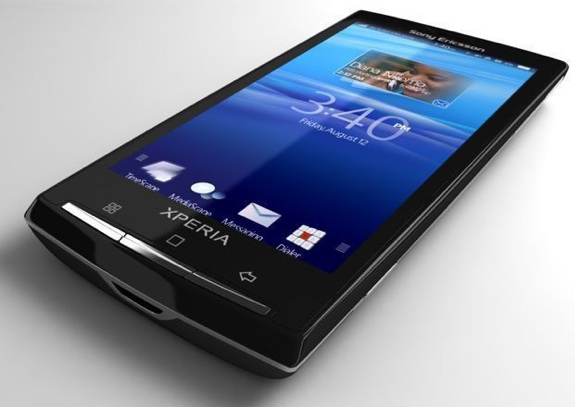
Sony Ericsson announced Friday that its Xperia X10 smartphone will be upgraded to Android 2.3 Gingerbread by the third quarter, though it might not be available to all users.
Sony Ericsson upgraded the X10 to Android 2.1 in November, and had planned to stop there, but customer demand and technology advances prompted the company to consider another upgrade.
"We have listened to our consumers," Sony wrote in a blog post. "In addition, the development of the software for our new 2011 range of Xperia phones gave us a solution that made it possible to deliver Gingerbread on Xperia X10."
Sony Ericsson decided to bypass the Android 2.2 update because it has been focused on Gingerbread for its upcoming line of Xperia phones, including the Xperia Play "PlayStation phone."
The rollout, which will technically be Android 2.3.3, is planned for the end of the second quarter into the third via the company's PC-based upgrade client. At this point, the Xperia X10 is available from carriers and in a version not tied to a specific wireless company, and the Gingerbread update will initially be provided to X10s not tied to a carrier.
Click to continue reading Sony Ericsson Xperia X10 to get Android 2.3 Gingerbread upgrade
Bleeding Edge TV 378: iPad 2 Smart Cover review

Posted by Andru Edwards Categories: Full Episodes, Gizmatic, Accessories, Apple, Features, Podcasts, Videocasts, Videos,
We review the Smart Cover for the iPad 2 in this episode. Apple went back to the drawing board after their original iPad Case was found to not be the best design, and alongside the release of the iPad 2, they've got the Smart Cover. Using magnets to connect itself to the iPad, the Smart Cover is available in polyurethane or leather, and acts as a screen protector cleaner, and stand for the iPad 2. We give you a look at how it works.
You can pick up the iPad 2 from the Apple Store Online.
Big thank you to JackThreads for sponsoring the show - be sure to check them out, we've got exclusive invite codes that give you $5 to use towards anything you'd like.
Here's how to get the show:[Download] - iPod-formatted H.264
[Download] - 720p HD
[Download] - 1080p MP4
iOS 4.3.1 now available

Posted by Andru Edwards Categories: Apple, Smartphones, Handhelds, Software,
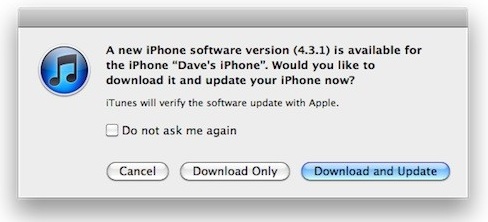
Apple just released iOS 4.3.1 to the world, aiming to fix things like iPod touch display issues, AV-out troubles, problems with enterprise apps, and a few other bugs that were hanging around. If you've been running iOS 4.3 and have been experiencing a few niggles, chances are this'll clear that up. Connect your iPhone, iPad, or iPod touch to iTunes and grab the update.
Starz delays Netflix debut of Camelot

Posted by Andru Edwards Categories: Corporate News, Home Entertainment,

Days after Showtime said it will pull some of its original programming from Netflix's Watch Instantly, Starz has announced some changes to its Netflix lineup, saying it will delay the Netflix debut of "Camelot" for 90 days.
Starz is set to debut its original series, "Camelot," on April 1. As reported by the LA Times, Starz was originally scheduled to debut "Camelot" via Netflix Watch Instantly on April 2, but will now wait 90 days until the show is viewable online.
Starz also plans to delay movies, though a Netflix spokesman said there are "no changes to movies." As the LA Times notes, however, the companies' current contract expires in 2012, so the movie delays could be added to next year's negotiations.
Starz did not immediately respond to a request for comment.
Click to continue reading Starz delays Netflix debut of Camelot
Nvidia GeForce GTX 590 review

Posted by Andru Edwards Categories: Accessories, Features, PC / Laptop, Product Reviews,
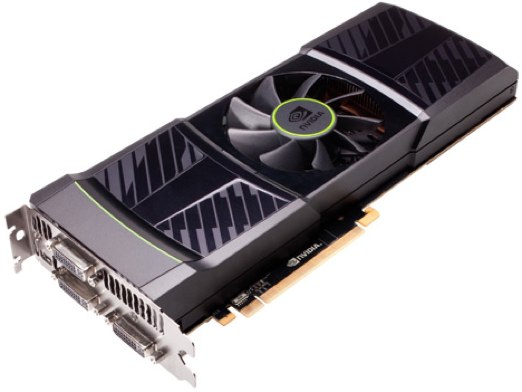
The months-long jockeying for position between AMD and Nvidia has led to this moment: Who has the faster flagship video card? Nvidia held the crown for a long while thanks to its powerful and polished GTX 580, still the best single-processor card on the market. But when AMD released its dual-GPU Radeon HD 6990 earlier this month, and it delivered blistering benchmark results along with a sky-high $699 list price and an ultra-noisy fan, it looked like AMD might own the top tier this generation. Now that Nvidia has released its own dual-GPU card, the Nvidia GeForce GTX 590 (also $699), we definitively know the answer: AMD just wins the performance crown. Nvidia's card has some solid reasons to recommend it—much better noise characteristics, it will fit in a (slightly) wider variety of cases—but for this much money you probably want the fastest card there is. And the GTX 590, in spite of its virtues, is not quite it.
The GTX 590 is, however, packed with power. You'd expect that from any two-GPU card in general—the last one Nvidia released was the GTX 295, in early 2009—and especially from one that essentially fuses two powerful GF110 GPUs (the kind used in the GTX 580). It sports a total of 1,024 CUDA processing cores, 128 texture units, 96 ROP units, and 32 tessellation engines for making the most of one of the most sought-after DirectX 11 (DX11) features. The card's graphics clock runs at 607 MHz, its processor clock at 1,215 MHz, and its memory clock at 3,414 MHz. It's loaded with 3,072MB of GDDR5 memory for the frame buffer, which operates over a 384-bit memory interface.
Click to continue reading Nvidia GeForce GTX 590 review
Nvidia GeForce GTX 590 dual-GPU video card released

Posted by Andru Edwards Categories: Accessories, PC / Laptop,
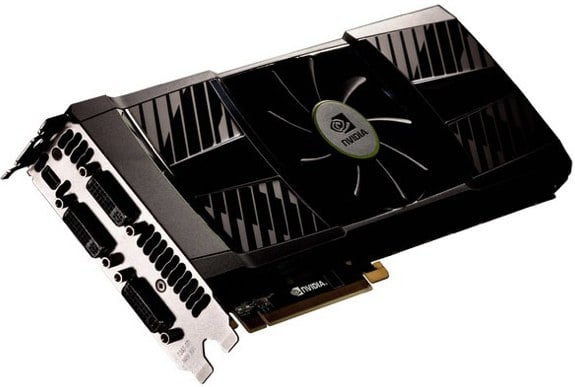
Hot on the heels of AMD's recently released Radeon HD 6990, Nvidia introduced its own new flagship video card today, the GeForce GTX 590.
Nvidia's first dual-GPU video card since the GTX 295 in early 2009, the GTX 590 unites a pair of GF110 GPUs (the kind used in the GTX 580, the fastest single-GPU card on the market) on a single card. This means you get of 1,024 CUDA processing cores, 128 texture units, 96 ROP units, and 32 tessellation engines. The card's graphics clock runs at 607 MHz, its processor clock at 1,215 MHz, and its memory clock at 3,414 MHz. It's loaded with 3,072MB of GDDR5 memory for the frame buffer, which operates over a 384-bit memory interface.
Click to continue reading Nvidia GeForce GTX 590 dual-GPU video card released
Duke Nukem Forever delayed. Again.

Posted by Andru Edwards Categories: Corporate News, First Person Shooters, PC, PlayStation 3, Xbox 360,
We've played "Duke Nukem Forever." We swear we've played it. We've even brought back proof that we played it. And when we played it, Gearbox president Randy Pitchford promised us—promised us!—unequivocally that the game would be released May 3. Today, word has emerged that the game is being delayed until June 14 in the United States and June 10 internationally.
We're crushed, but we suppose we shouldn't be surprised. Duke Nukem Forever is the most-delayed title in the modern history of game development. Originally slated for release in 1997—and that's not a typo—this sequel to 1996's "Duke Nukem 3D" has seen countless changes of hands, vanishing and reappearing developers, lawsuits, and more trade shows than PCMag's intrepid staff. It's even won Wired's Vaporware of the Year of the Award more than once—several times after it received a 2004 lifetime achievement award.
Click to continue reading Duke Nukem Forever delayed. Again.




